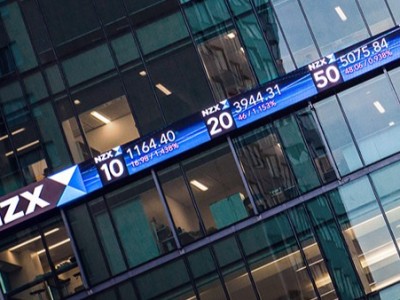Learn » Blog » What are you paying in KiwiSaver fees?
What are you paying in KiwiSaver fees?
Published on 18/09/2023

Fees on financial products and services can be a real mystery, especially to new or less seasoned investors. With complex fee structures buried in the fine print or seemingly baked in like filo pastry, it can be confusing.
When it comes to KiwiSaver funds though, it is not as complex as you may think. Many KiwiSaver providers charge a $ membership fee. Sometimes this is referred to as an annual or administration fee (or various other names). The amount of this fee can vary widely, and it is generally intended to cover a range of costs such as marketing, legal, administrative, and customer services. Some managers (like Simplicity) don’t charge a membership fee.
All fund managers charge a management fee (also called “management and administration charges”) that is most commonly expressed as an annual percentage of your KiwiSaver balance. This fee is usually calculated daily and then charged to your account monthly. This fee includes a basic management fee, and some managers also incorporate performance-based fees and/or “other management and administration charges” as well.
Sorted.org’s Smart Investor tool allows you to compare KiwiSaver fund fees by combining membership fees and management fees for a $10,000 investment into a single fee percentage for each KiwiSaver fund. This can typically range from 0.20% or less for lower-risk KiwiSaver funds up to 3% for some higher-risk funds.
True to our name, Simplicity does not charge a membership fee, and we only charge a basic management fee of 0.29% per annum across our Defensive, Conservative, Balanced, Growth and High Growth KiwiSaver funds. 15% of our fee is passed to the Simplicity Foundation who donate this money to a range of approved charities. Our fees are among the lowest in the market.
So how is Simplicity able to keep fees so low?
There are two main reasons:
1. We’re a nonprofit manager, owned by a Charitable Trust (the Simplicity Foundation): This structure means our purpose is to make our members wealthier, rather than returning a profit to management or shareholders
2. Passive fund management: Simplicity primarily uses an index tracking approach to manage our members' investments. This allows us to keep costs low compared to an active management approach
Fund types and fees
Some providers charge different fees depending on which type of fund you’re invested in. According to Sorted, the average investment fee on a growth fund in KiwiSaver is 1.23%, the average fee for a balanced fund is 1.01% and the average fee for a conservative fund is 0.90%.*
Active KiwiSaver managers often justify higher fees on higher-risk-rated funds, like growth and aggressive funds, by arguing that more management effort and expertise is involved in actively selecting and monitoring the investments. As we take a predominantly passive “index” approach to investing, Simplicity is able to keep our fees lower. It is important to note that higher fees and actively managed investments do not necessarily translate to better or best KiwiSaver performance.
You can compare our fees with other providers across different fund types using the Simplicity fee calculator here.
You can also compare fees and returns for all KiwiSaver providers’ funds using Sorted’s Smart Investor tool.**
While it is easy to get caught up on fees, this is just one part of the selection process you should go through when choosing a provider and a fund that’s right for you. Other considerations can include performance, customer service and communications, investment styles, environmental, social and governance (ESG) criteria and of course, people. These are all areas that we explore in our KiwiSaver Master Class.
All of our classroom content is free, and we cover a range of subjects that help you understand more about KiwiSaver, investing, retirement planning and other money-related subjects.


